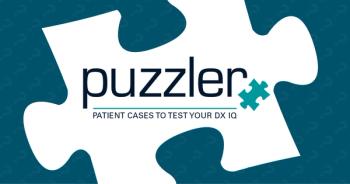
- Consultant for Pediatricians Vol 6 No 1
- Volume 6
- Issue 1
Photoclinic: Bilateral Clinodactyly of the Fifth Finger
A 4-year-old girl presented with bilateral deviation of the fifth fingers. The deformity was noted in early childhood. There was no history of trauma or family history of a similar deformity. Physical examination was normal except for incurving of the fifth fingers.
A 4-year-old girl presented with bilateral deviation of the fifth fingers. The deformity was noted in early childhood. There was no history of trauma or family history of a similar deformity. Physical examination was normal except for incurving of the fifth fingers.
Alexander K. C. Leung, MD, and W. Lane M. Robson, MD, of Calgary, Alberta, diagnosed bilateral clinodactyly of the fifth fingers. Clinodactyly can be congenital or acquired. In most cases, the condition is an isolated anomaly and is not of any medical significance. Clinodactyly is occasionally a minor manifestation of a syndrome such as Down syndrome, Seckel syndrome, Cornelia de Lange syndrome, Mohr syndrome, or Silver-Russell syndrome. Clinodactyly can be familial and transmitted as an autosomal dominant trait. Acquired clinodactyly is usually secondary to physical or thermal injury to the epiphyses.
The family was reassured of the benign nature of the condition and that no treatment was necessary.
Articles in this issue
almost 19 years ago
Polydactyly of the handalmost 19 years ago
Photoclinic: Systemic Allergic Reaction to Embedded Sewing Needlealmost 19 years ago
"Focus on Vaccines" Correction:almost 19 years ago
Thyroglossal Duct Cyst in an 8-Year-Old Girlalmost 19 years ago
Foreign-Body Aspiration: A Guide to Early Detection, Optimal Therapyalmost 19 years ago
Pityriasis Rosea and Hot Tub Folliculitisalmost 19 years ago
Perianal Finding--Sexual Abuse or Normal Variant?almost 19 years ago
Photo Quiz: Making the Rounds: Round 1almost 19 years ago
Top Papers Of The Month: Cough Medicine as a Drug of Abusealmost 19 years ago
Photoclinic: Giant Congenital Melanocytic NevusNewsletter
Access practical, evidence-based guidance to support better care for our youngest patients. Join our email list for the latest clinical updates.






